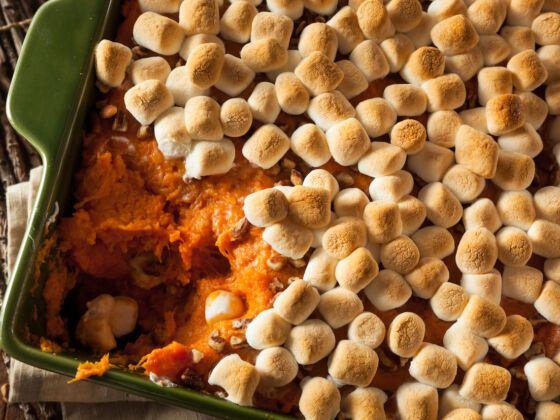Sweet potato casserole with a generous topper of marshmallows graces countless Thanksgiving tables across America. The combination is a classic — and frequently enjoyed — pairing of sweet on sweet that you’re bound to find regardless of where your holiday travels take you in the United States.
It’s not, however, the original way the country preferred to prepare its sweet potatoes. For centuries, early Americans preferred their sweet potatoes prepared without an extra sugary addition. The marshmallow top became the classic preparation in the most American way: A company with smart marketing sold us on it.
